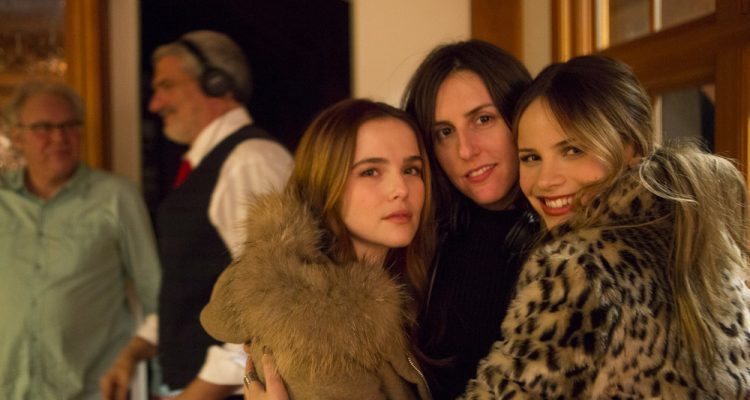Ry Russo-Young‘s “Before I Fall” really caught people by surprise at this year’s Sundance Film Festival. Usually the term YA (Young Adult) gets a bad rap from filmgoers, but “Before I Fall” draws on various film influences and makes them seem fresh.
Based on Lauren Oliver’s book of the same name, “Before I Fall” tells the story of Samantha Kingston (Zoey Deutch), a popular and beautiful high-school girl completely oblivious to the good fortunes she has in her life. It all comes crashing down on February 12th, which happens to be her last day on earth. The fact that she is stuck reliving that day over and over again makes Sam reassess every single person in her life in new and unexpected ways.
READ MORE: ‘Before I Fall’ Is A Stylish ‘Groundhog Day’ With YA Movie Life Lessons [Sundance Review]
It sounds like a cliché-filled romp waiting to happen, but Russo-Young and her DP Michael Fimognari conjure up a world of dread, where nothing is as it seems and everything starts to happen unexpectedly. Deutch, the highlight of Richard Linklater’s boys-club movie “Everybody Wants Some!!,” is a star in the making and she proves, once again, that her incredible screen presence is something look out for in the years to come.
I spoke to Russo-Young about the film, the frustrating 24-day shoot and her influences.
 What’s your take on YA novels and YA movies?
What’s your take on YA novels and YA movies?
I think the term YA has a bad name, it’s a term that came more from marketing. The questions that I sort of say is: “Is ‘The Breakfast Club‘ a YA movie? Is ‘Ordinary People‘ a YA movie?” Today if they were made, we would probably call them that. I was tapping more into that tradition than, say, more of the current fare, I think.
There have been great recent ones as well, especially “The Perks Of Being A Wallflower.”
Yeah, 100%. I’m not saying that all YA movies are bad, but movies about teenagers have been a longstanding thing that is pretty incredible.
What drew you to this story?
What drew me to the story was how it worked on multiple levels. It had sort of profound affiliations with deeper questions about time and about coming into self-awareness. These age-old questions we should always be asking ourselves. But also that it surprised me. The first 30 pages of the film I wasn’t sure if I was into it, I was like, “I don’t know about these girls, do I like them? Am I on-board? What is it with this superficial film?” But I found the movie surprisingly moving and unexpectedly emotional. It was one of the few movies that I read where it got better as it went along and that I didn’t see where it was going.
 The time-loop device you use in your film is an “age-old thing.” Its been used in films such as “Groundhog Day” and “Source Code.” How did you try to make it your own?
The time-loop device you use in your film is an “age-old thing.” Its been used in films such as “Groundhog Day” and “Source Code.” How did you try to make it your own?
One of the things that I liked about the film was that it used the time-loop device to an emotional and psychological end, which I hadn’t seen before in any of these time-loop movies. This is a really subjective version of a time-loop movie and I was attracted to that subjectivity, which is something a book can do so well: you can be so much into the head of a character, but in film it’s far more challenging. I wanted to put the audience inside Sam’s perspective. The movie had lent itself to that because it had dramatic irony in it: the audience is in on this joke with Sam, in a way, this private purgatory of her reliving the same day, and nobody else in the movie is aware of that. “Groundhog Day” is a comedy, and this is a darker, more existential exploration of self, which is so important to what happens to the melodrama and angst of being a teenager.
What was the biggest challenge in making the film?
This is something Zoey [Deutch] says sometimes about the movie: it’s that the irony of shooting a movie about time is that you just don’t have enough time to shoot it. I’m sure I’m not the only person to tell you this, but certainly the challenge of the movie was that we actually shot it on a very small budget. We shot this movie in 24 days, we were racing in terms of getting the production-value level and getting the performances where we needed them to be. So it was a really challenging, physical production.

